Some dogs naturally have blue eyes. Yet among them, many are built for the cold—strong, agile, and ready to handle icy winds and snowy trails.
Blue eyes in dogs are usually linked to genetics, pigmentation, or specific breed traits. But in many cases, those piercing eyes belong to dogs with winter running through their veins. From icy climates to snow-covered mountains, these dogs were born to thrive where others would shiver.
Their coats are thick, their stamina high, and their personalities as bold as their gaze. Some even have histories rooted in pulling sleds across frozen tundras.
In this guide, we’ll look at dog breeds with naturally blue eyes that aren’t just stunning, but also perfectly suited for life in cold winter climates.
Dog Breeds With Blue Eyes For Cold Winter
1. Australian Shepherd
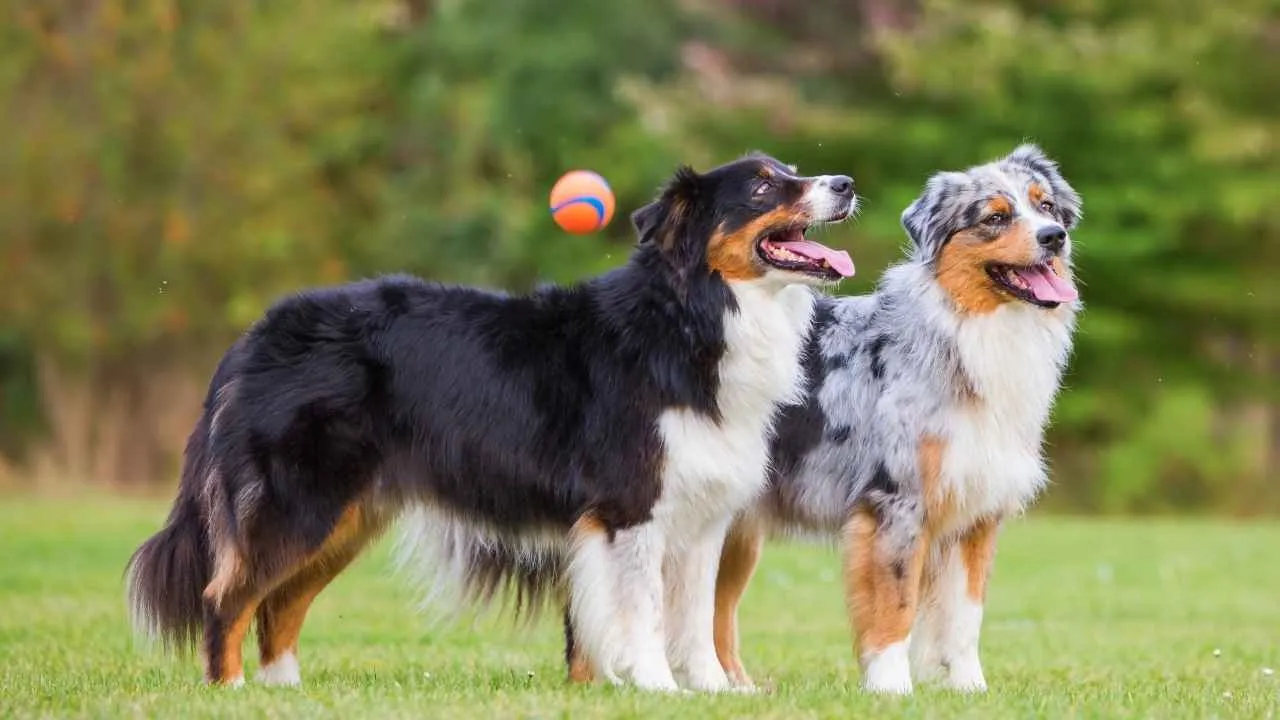
Australian Shepherds are known for working in rugged conditions, where snow and wind are part of daily life. Their endurance holds up in tough winter climates across elevations and open ranches. A thick double coat provides insulation that works with their energy, not against it.
Blue Eyes With a Ghostly Edge
Some Aussies are born with pale, icy-blue eyes that stand out in sharp contrast to their merle coats. These ghostly eyes aren’t guaranteed in every pup but are genetically linked to their coloring patterns. The look is striking—almost piercing—without affecting vision or sensitivity.
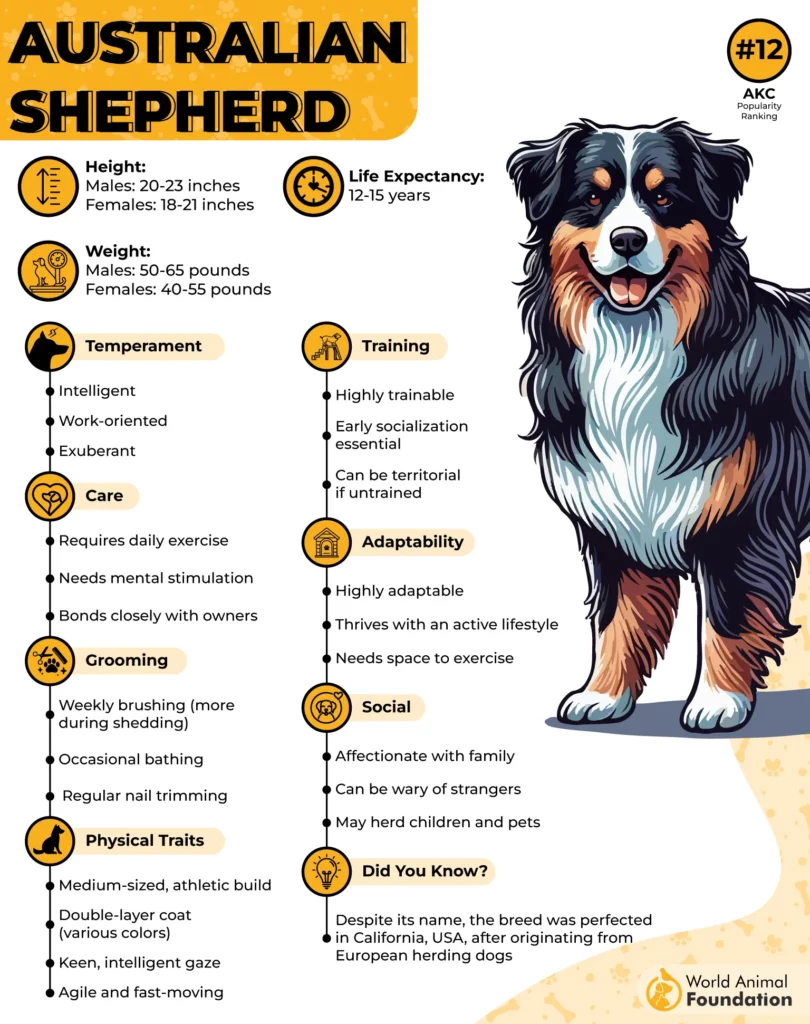
Precision Bred For Harsh Terrain
They were originally bred for agile herding, and that agility makes them useful in navigating icy ground without losing stability. Even in snow-covered fields, they adjust speed and angle intuitively. That spatial awareness makes them dependable even when visibility is low.
One of the Few Tail-Free Breeds
Many Aussies are born without tails, a natural trait called “natural bobtail”, as mentioned in the AKC. It’s not a result of docking—it’s in their genes. This trait minimizes frostbite risk in extreme weather, which matters during long, active hours outdoors in freezing conditions.
2. Siberian Husky
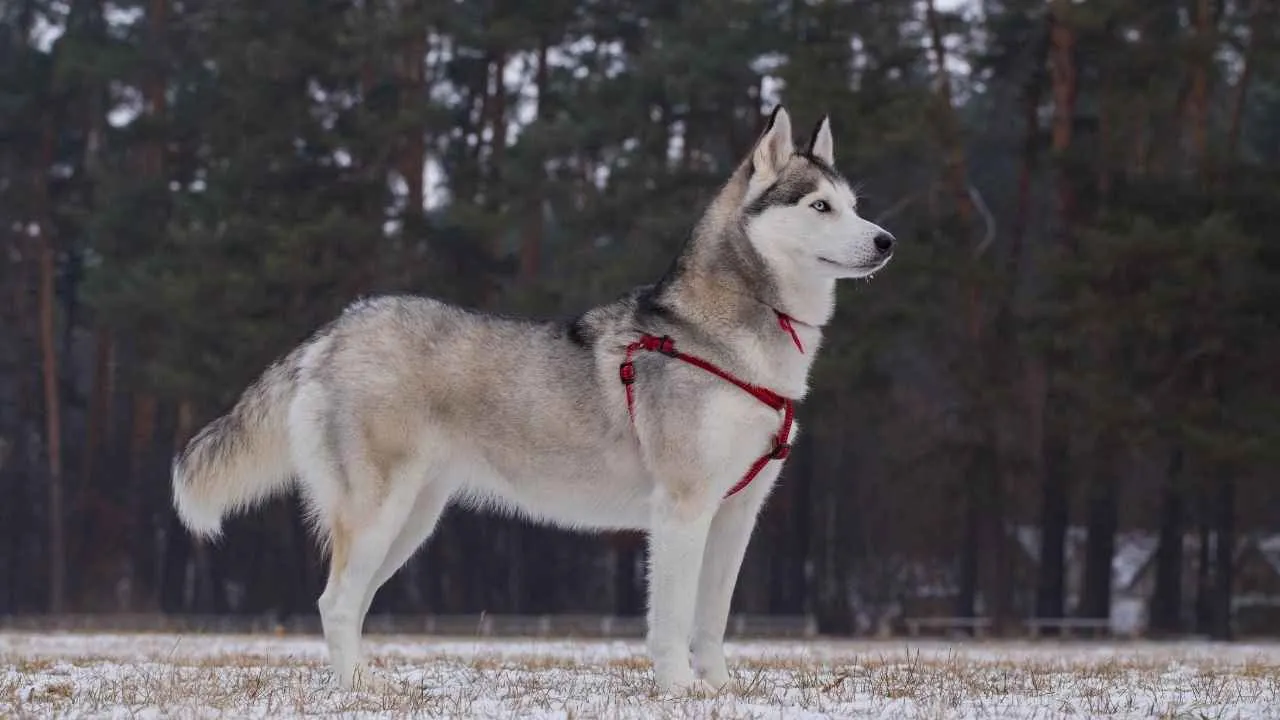
Siberian Huskies were developed by the Chukchi people for long-distance sled pulling in extreme Arctic conditions. They work efficiently without overexertion, conserving energy across miles of frozen ground. That legacy still shapes how they handle deep snow and biting winds.
Eye Color That Turns Heads
Their striking blue eyes are often paired with a symmetrical facial mask that enhances their alert expression. Some may even have heterochromia—two differently colored eyes, with one commonly being blue, as stated in Pet Assure. This trait doesn’t impact vision or health in any clinical way.
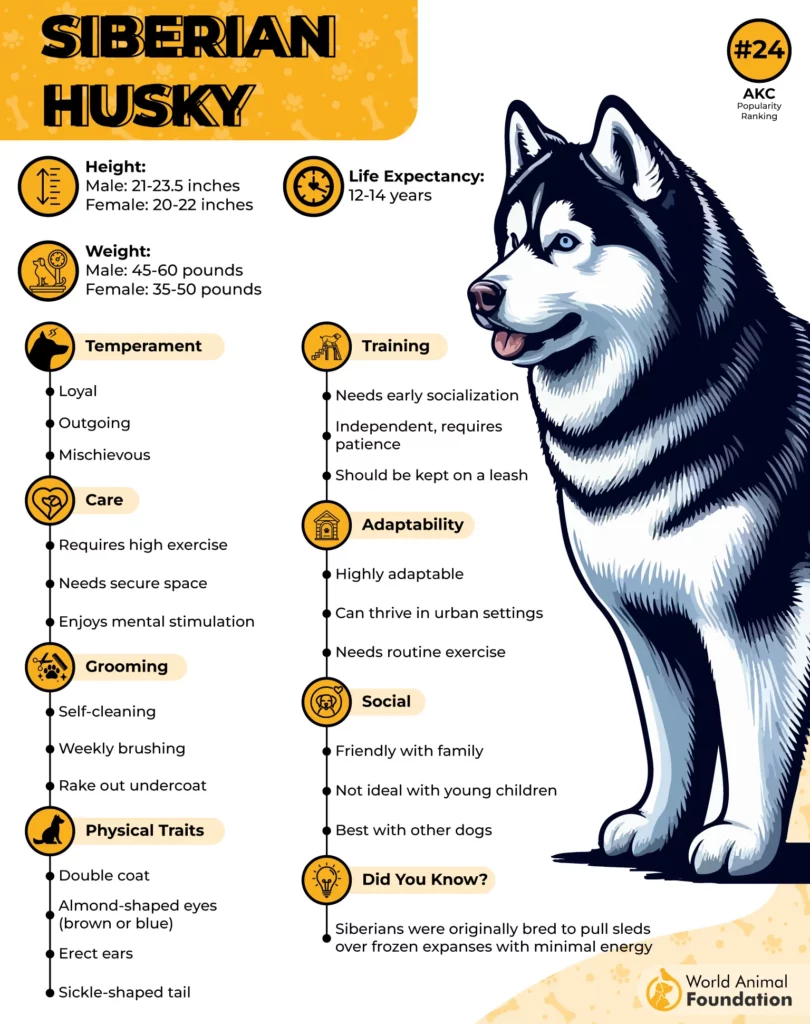
Structure That Supports Motion
As an athletic and dignified breed, Huskies are built with a narrow chest and powerful hindquarters. These features allow for maximum stride length and smooth forward momentum. Their gait is effortless, enabling long runs without loss of balance or form.
Behavioral Intelligence in Cold Packs
Huskies have an unusually strong sense of pack structure, originally essential for cooperative sled teamwork. They respond best to clear communication, not repetition. Their vocalizations—including howling—are a social tool, not a nuisance, shaped by their working ancestry.
3. Alaskan Malamute
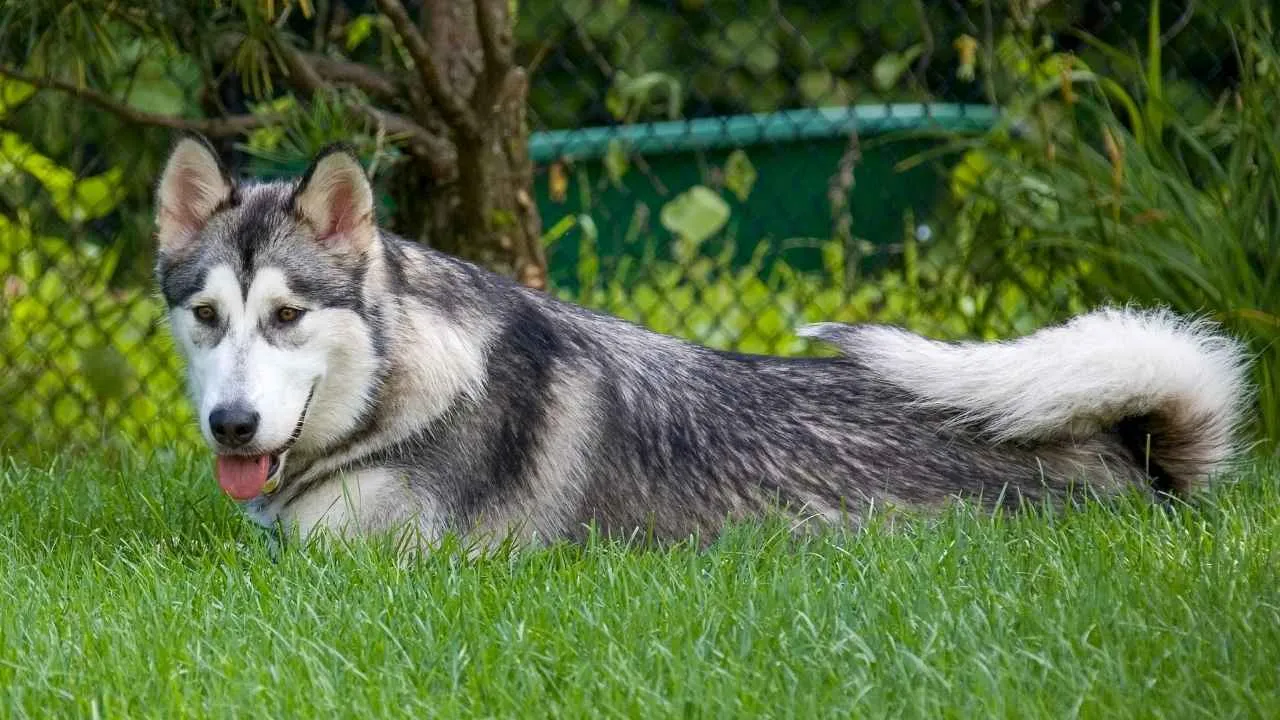
Alaskan Malamutes were bred to haul heavy loads across vast snow-covered trails. Their strength lies in stamina, not just speed, making them valuable in long-distance winter travel. They’re one of the oldest Arctic sled dogs, known for their reliability in extreme cold.
Eye Color and Visual Sharpness
While brown eyes are common, occasional pale blue eyes appear due to genetic variance, not standard, but naturally occurring. These eyes add to their wild, wolf-like appearance without affecting vision or performance. The gaze often feels intense, especially in snowlit environments.
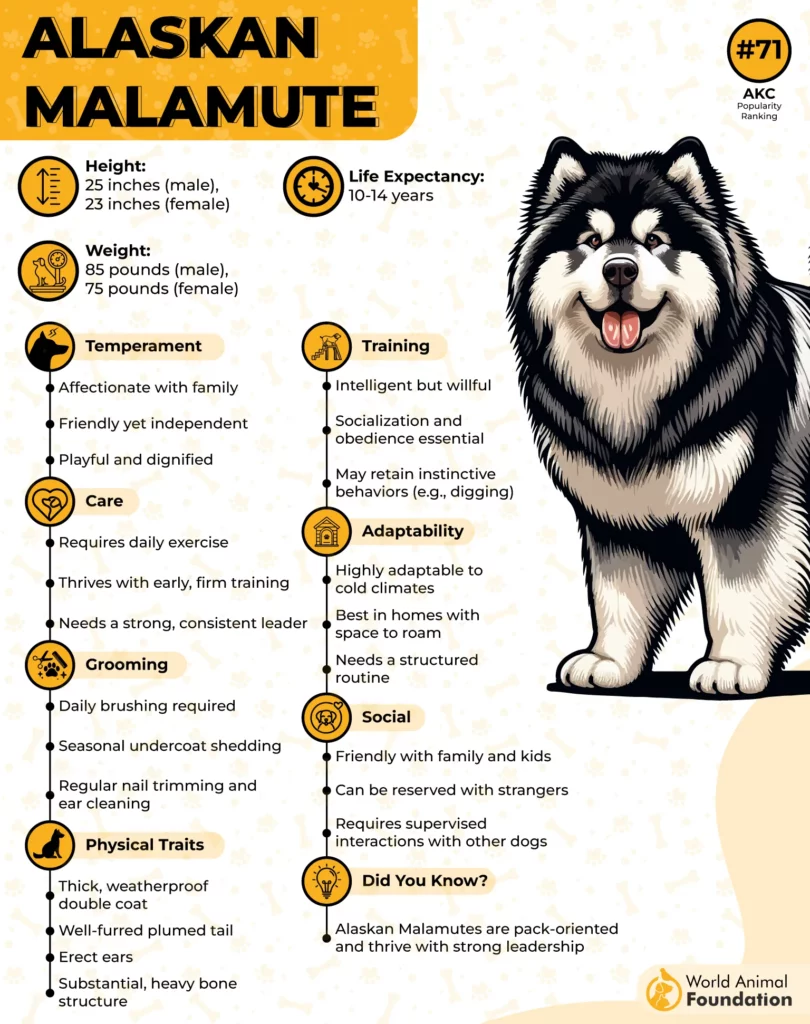
Stable Temperament Around Families
They are steady and composed, not reactive—traits that matter when coexisting with horses or other animals. Though independent, they remain tuned into household routines. That’s why many see them as strong family pets who adapt well to active, outdoor lifestyles.
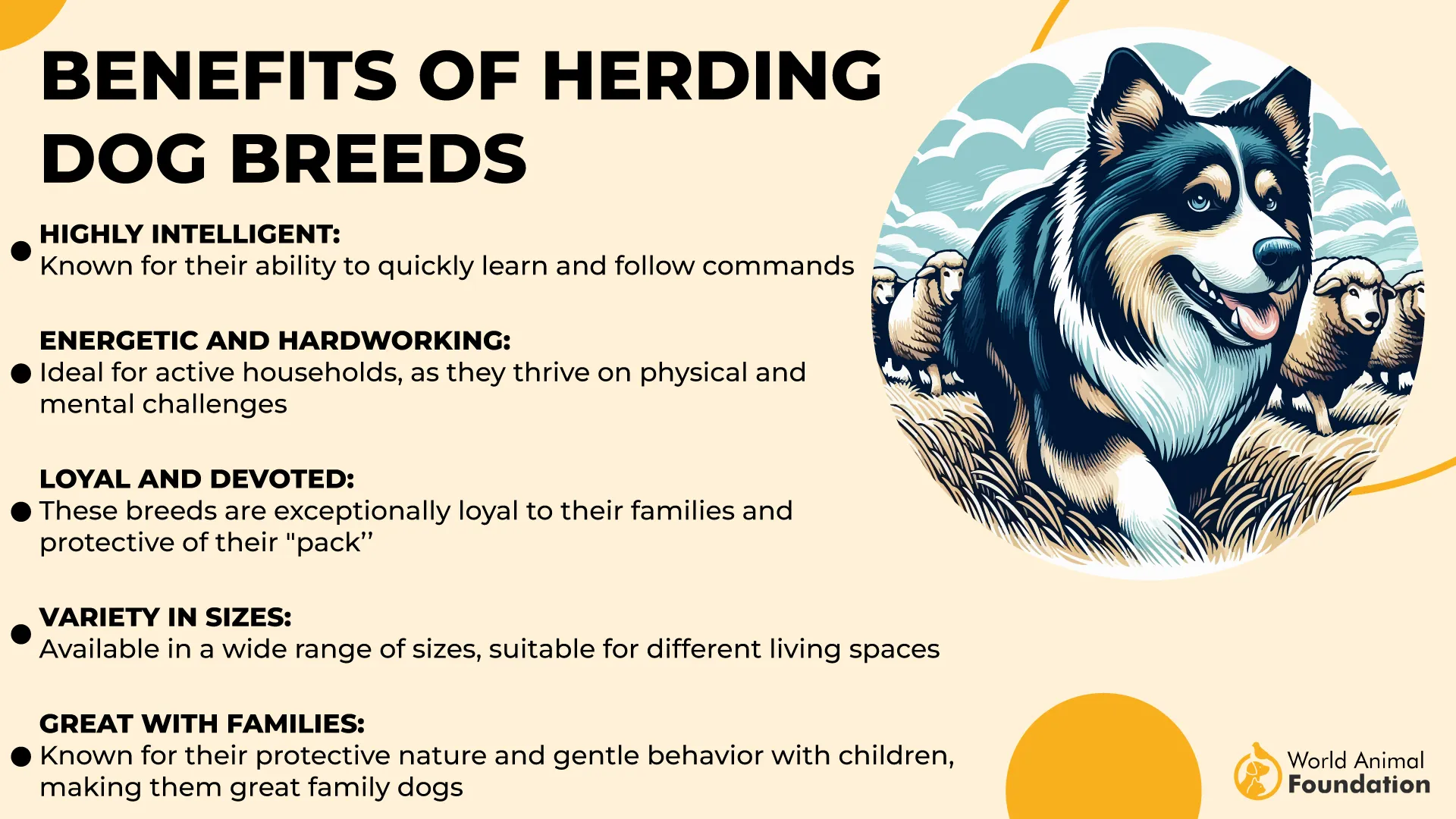
High Sensory Awareness
Alaskan Malamutes are highly alert to distant movement and terrain changes even under snow cover. Their keen sense of smell helps them detect scent trails buried beneath fresh powder. In cold wilderness settings, this awareness supports both direction and safety.
4. Shetland Sheepdog
Originating from the Shetland Islands of Scotland, this breed was shaped by cold winds and rocky terrain. Their dense undercoat traps heat while the longer top layer repels moisture and snow. Compact body structure also helps minimize heat loss in freezing temperatures.
Intense Work Focus in Winter Settings
Shetland Sheepdogs are task-oriented and alert, often anticipating movement before it happens. Their ability to herd livestock with precise directional control makes them useful in snowy fields. Even in low-visibility conditions, they rely more on instinct than on sight.
Emotionally Attuned Yet Practical
Known for their affectionate nature, Shelties often mirror the energy of those around them, as Britannica claims. Their calm, observant presence allows them to read shifts in body language and environment. They stay connected but not clingy—just the right balance for outdoor work.
Advanced Recall and Sound Communication
Shelties can remember verbal cues and directional commands with long-term consistency. Their high-pitched vocalizations are often used to signal movement, alert handlers, or maintain order. This vocal sensitivity supports them during active field work in wide, snowy areas.
5. Old English Sheepdog
Dense, shaggy fur with a thick underlayer keeps body heat close, even in sub-zero temperatures. Snow and moisture roll off the coat, reducing the chance of chill or dampness. This natural barrier lets them stay active outdoors for long durations in winter.
Calm But Capable Movement
Despite their size, they move with controlled agility and surprising coordination over icy terrain. Their gait was developed to manage uneven ground while managing livestock. They conserve energy efficiently, making them adaptable to both snow-covered fields and barns.
Known For Their Distinctive Gait
Old English Sheepdogs have a unique, bear-like rolling movement—a result of their compact, muscular rear build. This trait contributes to their ability to cover ground without slipping or stumbling. The movement isn’t exaggerated but noticeable in wider, open spaces.
Blue Eyes Are Occasionally Seen
While brown is more common, some do inherit pale or mismatched eyes depending on coat genetics. Blue eyes are rare but recognized, especially in merle or white-headed individuals. The feature doesn’t affect vision but gives them an unmistakable, memorable appearance.
6. Weimaraner
Weimaraners were originally selected for their stamina across dense forests and open fields in European winters. Their lean but muscular build supports long-distance running, even on frozen ground. Their gait remains smooth and fluid, without slippage or fatigue signs.
Eyes With an Icy Glint
Young Weimaraners often have striking blue-gray or pale blue eyes, especially noticeable in colder light. While the color may fade with age, their early appearance draws attention for its sharp, glassy tone. The icy stare has become a known hallmark in the breed.
Skin and Coat Suitability
Though they don’t carry a long coat, their dense, close-fitting fur helps retain warmth during active movement. Proper conditioning and activity levels stimulate blood circulation, keeping them comfortable in brisk environments. Regular movement is key to winter tolerance.
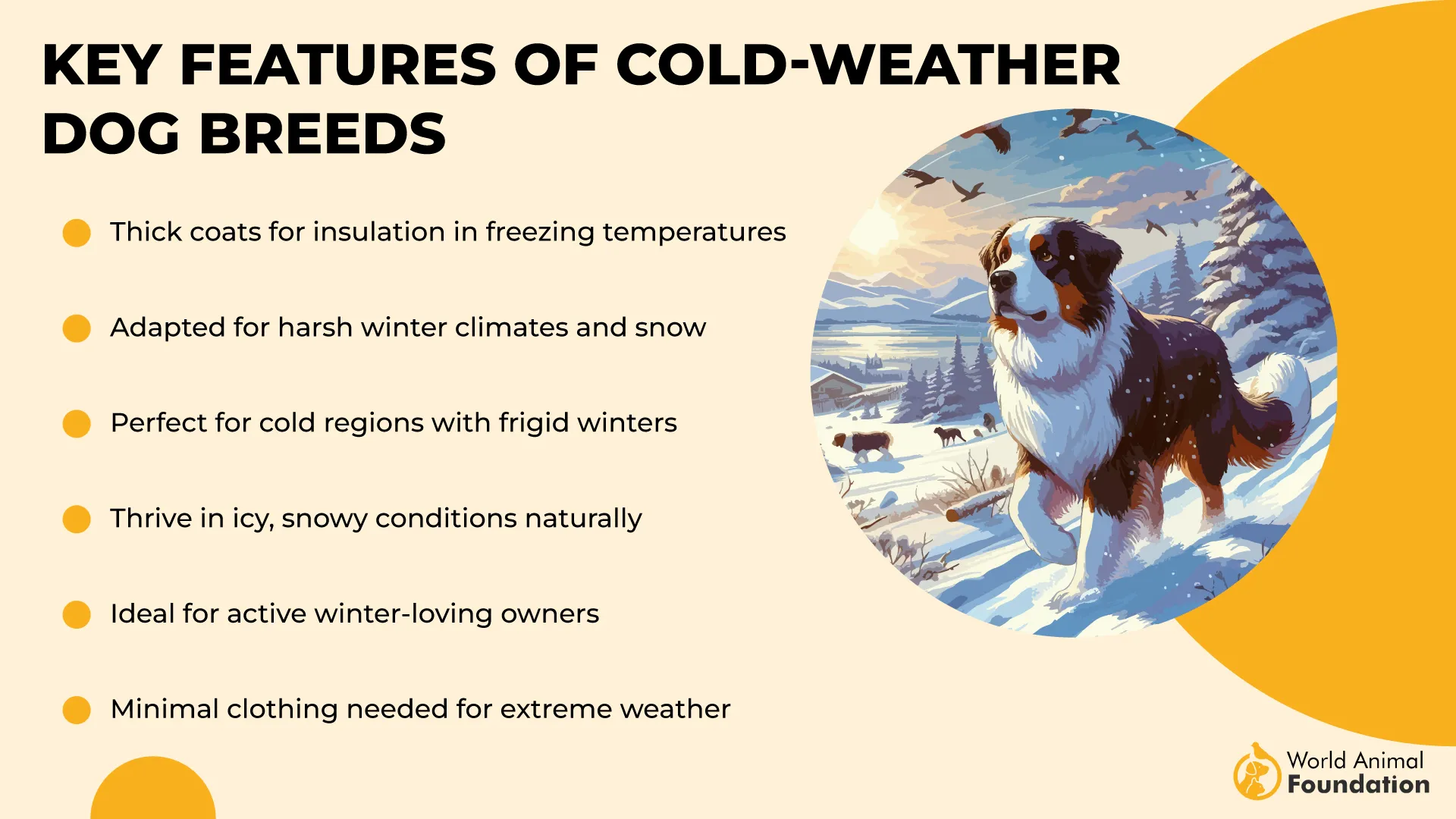
Known as the “Gray Ghost”
The nickname “Gray Ghost” emerged from their silver-gray coats and nearly silent movement during hunting. This silent tracking ability carries over to snow-covered areas, where footfall makes little noise. Their controlled presence helps avoid disturbing other nearby animals.
7. Alaskan Klee Kai
Despite its compact frame, this breed descends directly from Northern working lines. It retains features like a tightly curled tail and dense fur adapted to cold climates. Compactness actually helps conserve body heat during long outdoor activity.
Striking Eyes, Often Piercing Blue
Many Alaskan Klee Kai are born with vivid blue or bi-colored eyes, adding to their expressive appearance. The shape is almond-like, and the gaze is often intense. These traits trace back to their lineage from Northern spitz-type dogs.
High Alertness in All Weather
They’re highly responsive to motion and unfamiliar presence, even across snow-covered areas. This sharp awareness makes them reliable in icy, low-visibility surroundings. Their gait stays fluid, even across slick surfaces like packed snow or frost.
Known for Their Facial Mask
One defining trait of the breed is a symmetrical facial mask, often giving them a fox-like look. This feature is consistent across all coat colors and is part of the breed standard. The mask enhances their distinct expressions and helps with visual recognition in herding contexts.
Conclusion
Blue eyes in dogs exist for a few different reasons—genetics, coat pattern, or ancestry tied to colder climates. While some breeds show off ice blue eyes or bright blue shades, others may have light blue or even brown or amber eyes that still stand out against the snow.
But beauty aside, these dogs offer more than just a striking look. Many are great family dogs, some are known as sensitive dogs, while others have strong roots as hunting dogs or even guard dogs. A few also serve as search and rescue dogs, especially in snowy terrain.
Whether you’re drawn to stunning blue eyes or simply want a breed that thrives in the cold, these winter-ready companions are practical, dependable, and undeniably beautiful.


